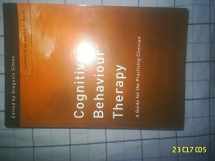
Cognitive Behaviour Therapy: A Guide for the Practising Clinician
Book details
Summary
Description
Although Cognitive Behavioural Therapy (CBT) has a well elaborated theoretical background and documented standard therapeutic process, new specific theoretical formulations and genuine techniques seem to continually appear. These new treatment developments in CBT constitute the heart of this book.
Leading researchers and clinicians, who are also well established experts in the application of CBT present the extent of their experience, as well as appropriate and state-of-the-art treatment techniques for a variety of specific disorders:
* Management of Major Depression, suicidal behaviour and Bipolar Disorder.
* Treatment of Anxiety Disorders such as Panic Disorder, Obsessive Compulsive Disorder, and Generalized Anxiety Disorder.
* Application of CBT to Eating Disorder and Personality Disorders, especially Borderline Personality Disorder.
* Implementation of CBT with specific populations such as couples and families, children and adolescents.
The book focuses on clinical practice and treatment techniques, but avoids a step-by-step approach.
Instead it encourages flexibility and integrativity in order to help the practicing clinician become more competent and efficient in applying CBT. Well-known contributors reveal a variety of treatment styles, and case examples and treatment transcripts are used to show how theoretical innovations integrate with the practice of CBT.


We would LOVE it if you could help us and other readers by reviewing the book
Book review



